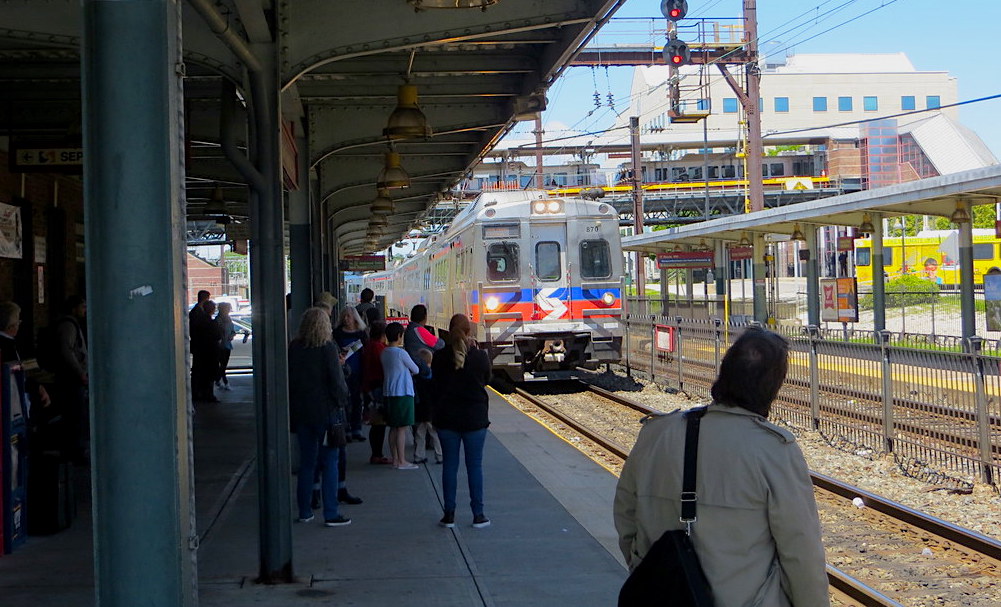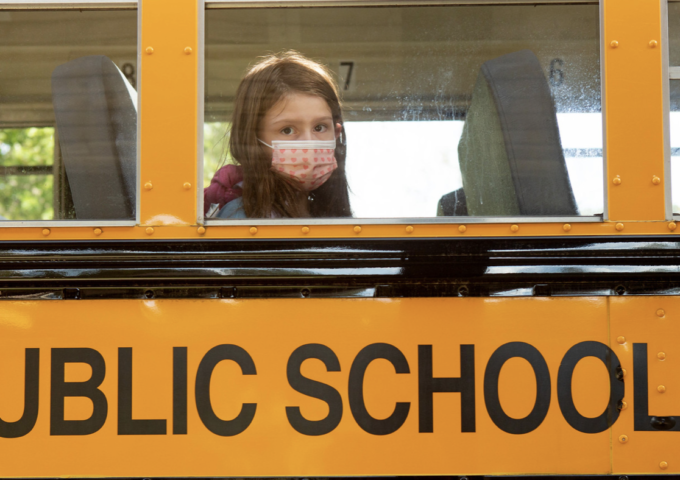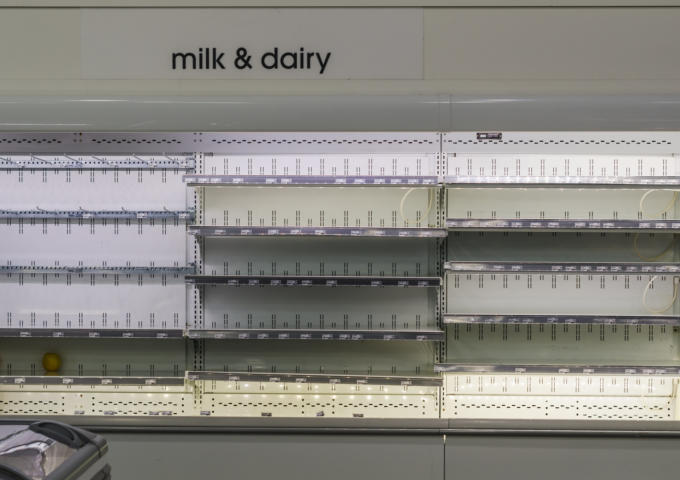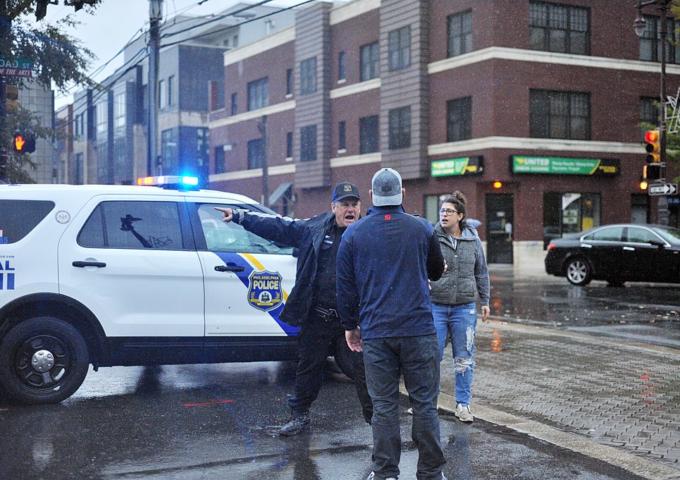The SHOUT Out
They don’t care about your age, nothing, knowing you can just get shot and knowing that I live so far away from home that if I walk down the wrong block and I don’t notice and somebody sees that I’m not supposed to be there, then they pull out a gun – that’s my life.
– Sixteen-year-old Alayah Hampton, at a recent meeting hosted by the Special Council on Gun Violence, per CBS Philly.
Your turn:
Do you agree with Alayah’s feelings? Share your thoughts about gun violence and fear with our readers via voices@philadelphiaweekly.com
Teen violence: Solution begins with parents
Dear Editor:
[This is in regards to] last week’s Shout Out question in PW regarding the recent violence in Center City: Is there anything to be done to stop these attacks?
Since the acts in question are being committed mostly, if not all, by black teenagers, I am sure Philadelphia Weekly has by now gone through a myriad of hateful, racist comments on this issue by individuals who know better than to confront these young people face-to-face. I work in hospitality in Center City, on a daily basis, I see these groups of kids walking around in groups doing things that they have no business doing.
Groups of six to 10 juveniles entering and exiting stores harassing and stealing from owners, breaking store windows and running – the 7-11 at 800 Walnut is a favorite target. I was in a pizza shop when four youths asked to use the restroom. As they came out of the restroom, they grabbed slices of pizza off of diners’ plates and ran out laughing, always with the running.
Victor Hugo wrote, “There are no such things as bad plants or bad men. There are only bad cultivators.” The cause and the solution begins and ends with the parents. Why are there so many charter schools in Center City [and why do they all] let out at the same time? When they leave school at 3 p.m., it’s like Bastille Day. The police are placed around 15th and Chestnut, at 15th and Market, and at Dilworth Park, to herd these children to the Market-Frankford El and the Broad Street subway.
Fights break out nearly every day, and extra security and police are stationed at the new Fashion District to keep it from becoming a hangout. I feel, in the long run, it’s a losing battle. There is a very short line between mischief and criminal acts. These kids recently have been snatching iPhones out of the hands of owners and running away, again with the running. Where are the mayor and City Council in all this?
I said earlier the solution begins and ends with the parents, since the kids who don’t go home, wander around Center City with their backpacks sometimes until 10 at night, what kind of future does that kid have? Good parenting will place the arrows in their quiver to help them become a human being, humanity, humility, remorse and empathy. Unfortunately, some of these children only have tribalism and antisocial behavior in theirs.
– A. Pettiford | Philadelphia

No celebration for Nicetown gas plant
Dear Editor:
Two days before Thanksgiving, Philadelphia’s Licenses and Inspections Review Board sided with the city, allowing SEPTA to keep an air pollution permit to operate a gas-fired power plant in Nicetown. The announcement came after five months of deliberation.
Bad news at Thanksgiving was a déjà vu for activists opposing the SEPTA gas plant. It was the week following Thanksgiving 2017 when Philadelphia’s Air Management Services, which enforces air quality regulations, issued the Nicetown air permit by quietly posting it on its website. This also came after five months of deliberation, following public comments, which had elicited rigorous opposition.
Regional Rail customers had little reason to celebrate L&I’s Thanksgiving verdict. SEPTA’s new gas plant next to its Midvale bus depot is designed to generate a portion of the electricity needed to power six regional rail train lines. Currently 100% of SEPTA’s electricity is provided by PECO. Generating electricity in Nicetown will not reduce SEPTA’s train fares or keep the trains running better in bad weather.
Neighbors living within a mile of SEPTA’s gas plant also lacked motivation to “pop the cork.” While SEPTA and Mayor Kenney have promoted the project as a benefit for the community, the plant will add 73 tons of toxic emissions into the air each year. Nicetown neighbors are already familiar with routine pollution inversions in warm weather. The area sits in a topographical bowl, and the air is polluted with combustion engine exhaust from the Roosevelt Expressway and heavy street traffic, as well as diesel fumes from freight trains and the 312 buses that operate from SEPTA’s Midvale Depot.
According to City Health Department reports, Nicetown has some of the highest rates of diseases that are associated with outdoor air pollution in Philadelphia, including cancer, mental illnesses, and the second-highest childhood asthma hospitalization rate.
Environmental groups also declined to toast the Thanksgiving event. While SEPTA asserts that burning gas locally will reduce carbon emissions, environmentalists consider their math to be fundamentally flawed.
SEPTA’s calculation omits significant methane leaks from the extraction and transport of natural gas, uses outdated numbers for PA’s electrical grid, and ignores regional energy trends. Environmentalists have been calling for SEPTA to transition to renewable, fossil-free energy. UN reports indicate that the world needs to reduce greenhouse gas emissions to stop climate change. The largest polluters – like the U.S. and China – need to move even faster. SEPTA’s new investment in gas-fired power plants is not compatible with that goal.
Residents of the affected communities and environmental groups across the Delaware Valley have worked to stop SEPTA’s gas-fired power plant in Nicetown since 2016. The L&I Review Board was ruling on two appeals submitted by three organizations: 350 Philadelphia, Neighbors Against the Gas Plants, and The Center for Returning Citizens.
This Thanksgiving, lawyers for the appellants received quiet emails less than 24 hours before the L&I decision was to be announced.
It’s just plain cold, to ruin Thanksgiving this way, as if the city seeks revenge against taxpayers trying to prevent toxic dumping. But we will regroup, and encourage Philadelphia to do better things than passing fracked gas onto our communities.
– Lynn Robinson | Nicetown
Doesn’t anybody else ‘get it’?
Dear Editor:
Re: Courtney Harris Bond’s “The Kids are Crying” series about families dealing with DHS: This was the most insightful series I have ever seen in the Weekly. Actually, it is the most poignant and empathetic series I have seen about this issue in many years.
I worked in family court in the Bronx in the late 1980s. I remember. Doesn’t anybody else “get it”?
– Tom Shoener | Chestnut Hill
No food for Pennsylvania’s poor
Dear Editor:
What a way to ring in the holiday season. President Trump [recently] announced that he would tighten requirements for SNAP, which would cut hundreds of thousands of people off from their access to food security. This has been one of [Pa. Sen.] Pat Toomey’s white whales since he’s taken office. While Pat Toomey has no problem voting for a tax bill that gives billions in tax breaks for his super-rich friends, he takes personal offense to low-income people being able to buy their groceries. Only a real grinch like Pat Toomey would take joy in depriving hundreds of thousands of people of their access to food security.
– Beth Melena | Harrisburg

Time to ditch Electoral College
Dear Editor:
Everyone recognizes that the U.S. Senate, with two seats per state regardless of the state’s population, is undemocratic. But it is widely assumed that each state’s representation in the House of Representative and the Electoral College is proportional to the state’s population.
The fact is that even in those two bodies the more highly populated states are grossly underrepresented. For example, California has more than 67 times the population of Wyoming, but only 53 times the number of House seats. Since the number of each state’s electoral votes in the Electoral College is determined by adding the number of its House seats to the number of its senators, the inequity in both houses of Congress is replicated in the system for selecting the president.
Thus, for example, California, with more than 67 times the population of Wyoming, has only 18 times the number of presidential electors. California’s current total of 55 electoral votes would have to be increased to 221 to give that state the clout that is proportional to its population. There is a similar disparity between such heavily populated and underrepresented states as Massachusetts, New Jersey, New York and Illinois, on the one hand (all Democratic), and such over-represented sparsely populated states as Idaho, Montana and the Dakotas on the other hand (all Republican).
The winner of the popular vote in 2000 and 2016 each would have become president notwithstanding the Electoral College if the states’ electoral votes had simply been proportional to the states’ population.
– Michael Tolcott | Philadelphia
Pass election security funding
Dear Editor:
Bottom line: Our elections are still vulnerable to foreign interference. On top of hours of public testimony pointing to Trump bribing Ukraine to interfere in the 2020 election, the national security community has confirmed hostile foreign powers like Russia, China, and Iran are already working to compromise our upcoming elections.
That’s why the Senate’s refusal to pass much-needed election security funding measures is simply unacceptable.
Earlier this year, the House of Representatives passed $600 million in election security funding for states to upgrade digital-only voting equipment with voter-verified paper ballots and other security measures that would safeguard election results from hacking and cyber attacks – which is something we should all agree needs to be prevented.
I’m urging my senators to follow the House’s lead and pass $600 million in election security funding for states before time runs out. Lawmakers are duty-bound to keep our democracy safe. The American people are counting on the Senate to do the right thing and stand up for our democracy.
– Jean Wiant | Glenolden
Is a “Changing Philly” killing her residents?
There’s no doubt Philly is changing. A century ago, Philadelphia was an industrial powerhouse. That brought prosperity to Philly neighborhoods, but it also meant tremendous pollution. Today, many former industrial sites are being rezoned and redeveloped for residential use. Nowhere is that more apparent than in Kensington and the surrounding communities, where condominiums and apartment buildings with names like “Tie Factory Lofts” and “Frankford Stacks” are a nod to the area’s industrial tradition. Development in these areas is occurring at breakneck speed and radically reshaping neighborhoods. Developers behind these projects have a legal and moral responsibility to make sure new construction does not expose communities to past environmental threats and air quality hazards. And Philadelphia residents must hold them accountable.
Formerly industrial land often contains significant environmental contaminants like asbestos, lead, volatile organic compounds, solvents and a host of other toxins. Exposure to these contaminants can create serious health issues including a wide range of respiratory conditions and cancer. Developers must adhere to specific standards in testing land for these hazards and safely removing contaminated dirt and materials from the site.
Unfortunately, developers eager to meet construction deadlines cut corners, withhold information and even mislead regulators on the extent of environmental hazards on specific projects. At Clean Air Council, we’ve seen this occur time and time again. Environmental testing results are never shared with city, or contaminated dirt is not disposed of properly. Some developers are all too willing to put profit before the health of the very residents they’re hoping to attract.
But the problem is deeper than that. In Kensington and surrounding communities, this construction is also affecting residents already living there – many have lived in the area for generations. These neighborhoods already have some of the greatest health challenges in the city – from some of the highest rates of childhood asthma to some of the shortest life expectancies. Throughout the city, these hazards often disproportionately affects people of color. Non-Hispanic black and Hispanic children suffer asthma-related hospitalizations at a rate five to six times higher than that of non-Hispanic white children, according to Philadelphia’s Health of the City 2018 report.
As development changes these communities, we must make public health a priority. Through partnerships and initiatives like the Philadelphia Health & Environment Ethnography Lab, Clean Air Council has a number of initiatives to empower residents in Kensington and throughout the city with the knowledge and tools they need to understand the hazards facing their families and take action. It falls on developers to do the right thing and make sure construction projects don’t jeopardize public health. It falls on the city, neighbors and concerned citizens to keep them honest and guarantee the development does not put future or current residents at risk.
— Joseph Otis Minott | Philadelphia




